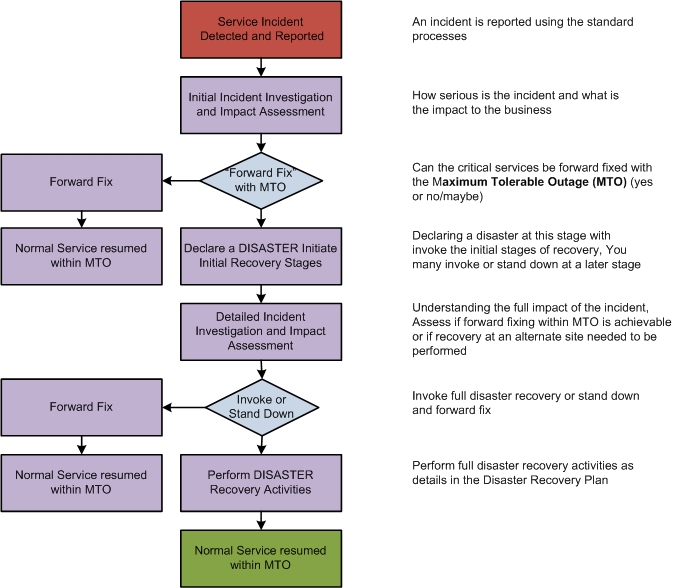Data Center Disaster Recovery Plans
There are many potential disruptive threats which can occur at any time and affect the normal business process. We have considered a wide range of potential threats and the results of our deliberations are included in this section. Each potential environmental disaster or emergency situation has been examined. The focus here is on the level of business disruption which could arise from each type of disaster.
Potential disasters are assessed as follows:
- Flood
- Fire
- Snow Storms
- Tornado
- Electrical storms
- Act of terrorism
- Act of sabotage
- Electrical power failure
- Loss of communications network services
As per industry standards there are three approaches to deal with disasters.
Hot DR Site:
Hot DR sites are suitable for applications and Services which are very critical in nature and can have down time from few minutes to few hours in case of any disaster. This approach is required for business critical services for example Bank datacenter, online transaction sites, Stock/share datacenters. Hot DR sites need to have online backup of All Services at Disaster recovery site. In case of Disaster, DR site initiates connections and business is back in action in minimum time. This approach need huge investments as datacenters are mirrored to DR Datacenter.
Warm DR Site:
Warm DR sites are mix of Hot and Cold DR solutionwhere only some of applications are considered for Disaster Recovery due to cost constraint or application dependency. RTO varies up to few days. Services are restored on priority or severity bases. To control the cost, only mission critical applications are considered for Hot DR and other are either moved to DR site or rebuilt in case of Disaster.
Cold DR site:
Cold DR site has offsite backup of main Data center servers and services and in case of disaster backup is restored on newly procured and installed servers. Service restoration delay is up to week or more time. In This case, Disaster recovery relies on Backup solution. Backup is restored on newly built or moved servers. While planning for Cold DR site, only need to identify space for DR movement and have basic infrastructure built so that in case of disaster, services can be built. Example of Cold DR will be entertainment website etc
Approach is considered based on Maximum Tolerable Outage (MTO). MTO is time for which organization can tolerate to have outage. Any incident which occurs for less than this period cannot be considered as Disaster. If incident exceeds MTO, Management invokes DR plan so that organization can have business continuity with minimal impact on business.
For planning DR option always evaluate all business and budget aspacts and take right approach to implement DR plan. Once DR plan is in place, Implement the same using BCP (Business Continuity Process ) to initiate DR. Define processes and checklists to deal any such circumstances.
You can also keep up to date with current trends and technology by visiting Data Centre Talk where we keep you informed on important changes as they occur.

